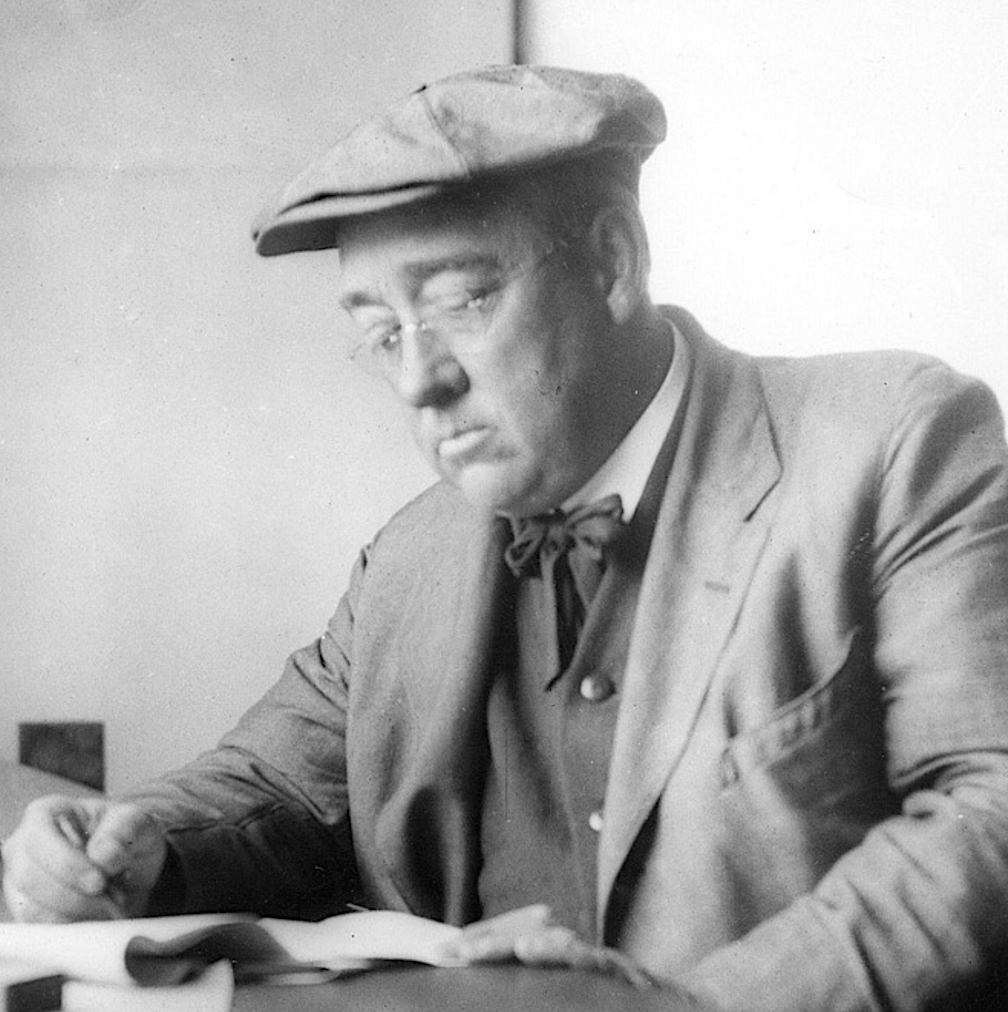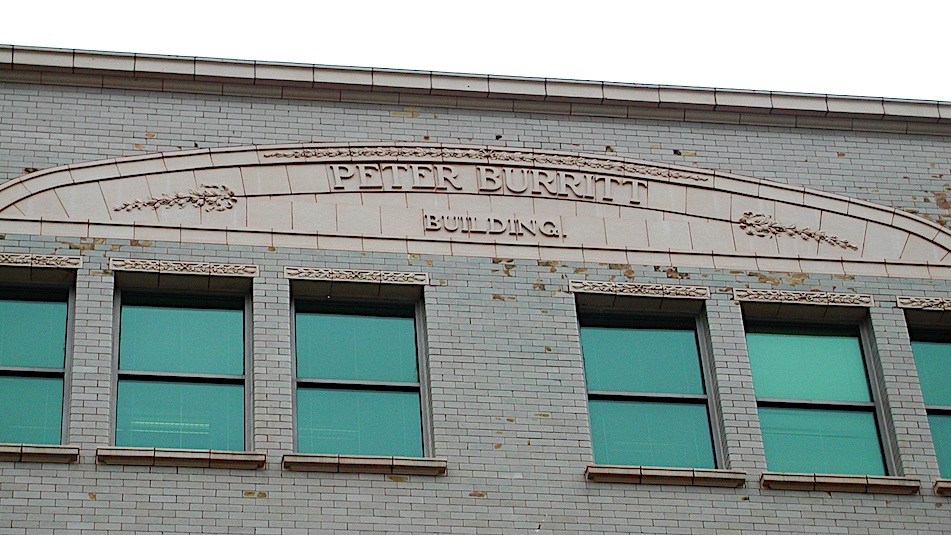I’m not quite done at Elgin, Ill.’s Bluff City Cemetery. Last time, I shared some photos of the tree-shaped monuments and the amazing faux log cabin they have. But there’s even more. BCC has a number of partial in-ground vaults. That means the front part with the door and fancy architecture is exposed but the back is built into a hill. Some even have venting on top for air circulation. They aren’t exactly rare but I don’t see that many of them.
The Hagelow Family
One example is the Hagelow vault. German immigrant Bernhard Hagelow headed this prominent Elgin family, born in Hohenzollern-Simarengen in 1830. Before arriving in America in 1849, he’d learned the paper making trade. He worked in New York and Canada, marrying Marie Barbara Schlegel at Niagara Falls around 1853. Daughters Louise and Amelia followed. Twins Rose and Violet were born around 1861 in Illinois.

The family moved to Elgin sometime in the 1860s. Bernhard introduced tar paper roofing materials to Elgin and prospered as a paper mill owner. But a fire wiped him out. He started over by going into the bottling and liquor trade, constructing a building (which still stands) to house it along with a saloon. His fortunes rose yet again. Twins Rose and Violet married Albert Heideman and Albert Fehrman in a double wedding on Oct. 20, 1885.
Wife Barbara died due to a heart ailment in May 1889 at age 57 and daughter Amelia died in May 1890 of tuberculosis. Daughter Louisa, who had married John Balle in 1880, died of tuberculosis in 1892. John Hagelow remarried in 1890 to widow Mary Frey and retired in 1894. But he remained active in the community, serving on the local school board and maintaining his memberships in the Masons, Knights Templar, and the Mystic Shriners. You can see his Shriners’ pin on his lapel in the photo above.
John died on Jan. 24, 1907 at the age of 76. Second wife Mary died in 1915. Daughter Violet died a year after her husband in 1934 and Rose died in 1945. Both are buried in Bluff City Cemeteries with their husbands. Louisa Hagelow Balle is buried at BCC in an unmarked grave.
Who’s in the Vault?
I think it’s safe to say that at least Bernhard is in the Hagelow vault. Online records note that he was interred in a “private vault” in Section 3. I believe it was likely constructed the year he died. However, I don’t know if first wife Barbara and daughter Amelia were moved from their spots elsewhere in the cemetery (which are noted in city records) to join him. Nothing in the records indicates they were moved but there are no stones bearing their names in Bluff City Cemetery. I did call the cemetery office to ask but even they weren’t sure.
The Redeker Family
The Redeker family vault is also in Section 3. The family came to Elgin in 1849 when German immigrants Christopher and Dorothea Redeker arrived. Their sons John and William did especially well as farmers. William married Lizzie Franzen and they had two children, Walter (1882) and Amelia (1885). Walter married Mary Galeener in 1907, working as a market gardener for a truck farmer. Sadly, Walter’s health was already not very good when he contracted acute pneumonia and died on Oct. 21, 1910. He was 28.
While the name of Walter’s father, William, is at the top, the date of 1911 is above the doors. I believe Walter was the first to enter that vault. I’m not sure what happened to Walter’s wife, Mary. William died in 1930 of heart failure at age 66 and Elgin’s records indicate he was placed in the vault. Wife Lizzie died in 1937. According to Ancestry, daughter Amelia, possibly a nurse, never married and died in 1981. I don’t know where she is buried.
The style of the name of the Redeker family above the year is different than the norm. The letters are intertwined with what I believe are oak leaves. Oak trees often symbolize strength and endurance in cemetery iconography. The polished columns (perhaps granite) that flank the door are topped by Corinthian-style capitals that stand out in contrast to the roughness of the vault’s stone. Visually, it makes you stop and notice it.
A Bevy of White Bronze
In addition to a number of in-ground vaults, Bluff City Cemetery has its fair share of white bronze (zinc) monuments. I always gravitate to these novelty markers, which I don’t often see in the South where I live. Sometimes you find such a marker for just one person, like Gordon Fish.
A native of Peru, Ohio born in 1822, Gordon wed Jane Gardiner in 1846. They had three children. Jane passed away in 1863 and Gordon remarried to Elizabeth Ellenwood the following year. The couple didn’t arrive in Elgin until around 1870 when Gordon was nearly 50 but it appears he made his mark once he got there. The 1880 U.S. Census lists Gordon as a mine owner.
“Entering the Valley of Shadows”
Gordon’s death records and a newspaper item I found indicate he had suffered from poor health and spinal paralysis before he died in 1884.
Gordon Fish’ funeral notice states that one of the local Masonic lodges he belonged to handled the funeral service. If you look on the side of his marker, it’s a Knights Templar emblem there. He was a member of both fraternal organizations. At first, it struck me as odd that the Masons would handled the service but a Knights Templar emblem would be on his marker. But alert reader Janet Hall kindly reminded me (via a comment she left) that the Masons and the Knights Templar do have connective roots that link them together. So it’s not unusual at all, really.

Meet the Edwards/Hubbard Family
By contrast, the Edwards/Hubbard family’s white bronze marker documents a total of eight people. It reminds me of the Scofield family marker (which is much larger) that I shared in Part I. In this case, it took me a while to figure out who was whom on this marker because the earliest death date is 1857 and the latest is 1925.
The central person on this marker is Callie G. Edwards Hubbard. Callie’s parents were Frederick Edwards and Eunice House Edwards. Callie was one of four children born to the couple. Frederick was a shoemaker much of his life and the family lived in the Champaign, Ill. area when Callie grew up. She married William G. Hubbard, Jr. of Elgin around 1872.
Eight People, One Marker
The couple had two children in Champaign. Winifred, born in 1875, died a year later. Son William was born in March 1877 but only lived two days. Both children were originally buried in a Champaign cemetery but records indicate they were moved to Bluff City Cemetery at some point. You can see their names on the base of the marker.
Callie’s mother Eunice died in 1878 at age 51 from “congestion of the stomach”. Since Frederick and Eunice had been living in Champaign, I was curious to know if they were actually buried in BCC. But census records confirm that the couple had moved to Elgin before Eunice died. Frederick continued living there with Callie and her family until his death in 1903 at age 88 from a cerebral hemorrhage.

Sharing another plate are Callie and her daughter, Charlotte, born in 1879. Charlotte died in 1882 of scarlet fever with meningitis. I believe it was after Charlotte’s death that this marker may have been started because the year 1882 is listed at the base beneath the names of Winifred and William. I say started because name plates could be added or removed as people died over the years.
Ethel, born in 1881, lived to adulthood and married Roy Webster in 1912. Marguerite, born in 1886, also lived to adulthood, and married Lyman Weld. The sisters are both married and buried with their spouses in BCC near this marker.
Two more names appear on the bottom beneath Callie and daughter Charlotte’s plate. Lucy J. Edwards, born in 1855, was Callie’s older sister who was born in Ohio. She died less than two years later. The other is Juliette Edwards Wetmore, another sister of Callie’s born in Ohio in 1843. She married Orren Wetmore and lived with him in Wisconsin, where she died in 1878 at age 34 of typhoid. I don’t know when either little Lucy or Juliette were buried at BCC, the records don’t say. But they are in the records as being buried there.
Callie died in 1925 at the age of 72 from a coronary thrombosis. It’s quite rare for me to see a white bronze plate with a death after 1920 because by that time, Monumental White Bronze’s factories were pretty silent due to the demand for metal for munitions during World War I. But some believe the company was still making plates up into the 1930s and this plate supports that assertion.
Where’s William?
You may be wondering what happened to William, Callie’s husband. Why is he not listed on the marker? While it was possible for the family to get a plate for Callie and Charlotte made in 1925, it may have been too late to get one by the time William passed away. William lived to age 88, dying in 1930 from a cardiac arrest. He is buried in Section 8 in the Edwards/Hubbard plot but I did not see a marker for him when I was there. His Find a Grave memorial does not feature a grave photograph. But he is buried there according to records.
The Short Life of Pvt. James Tuthill Jr.
My last story from Bluff City Cemetery does not include a large obelisk or fancy vault. It’s the story of a young man who only lived to be 20 because his country needed him to fight a war.
James “Jim” Pierce Tuthill Jr. was born to James Pierce Tuthill Sr. and Olive Lagen Tuthill in Elgin on Sept. 13, 1924. His father was an engineer. But Olive only lived a short time after Jim was born. She died on Feb. 27, 1926 from a pulmonary embolism following surgery. Jim’s father, James, remarried in 1935 to Mary Margaret Geister. Jim was about 9 at the time.
Jim’s draft card shows he was a student at Elgin High at the time, coming on board with the Marines in March 1943. He served as a private in the Company B, First Battalion, Sixth Marines, Second Marine Division. He took part in the Battle of Tarawa, fought on Nov. 20-12, 1943 between the United States and Japan at the Tarawa Atoll in the Gilbert Islands. It was part of Operation Galvanic, the U.S. invasion of the Gilberts. Nearly 6,400 Japanese, Koreans, and Americans died in the fighting, mostly on and around the small island of Betio, in the extreme southwest of Tarawa Atoll. Of the roughly 12,000 2nd Marine Division marines on Tarawa, 3,166 officers and men became casualties.
Wounded, James was sent to a hospital in Hololulu, Hawaii to recover. He died soon after having surgery on Jan. 8, 1944 and was buried on the island the same day. It wasn’t until Oct. 29, 1947 that Jim’s remains were returned to the U.S. for burial in Bluff City Cemetery. His father, James, died in January 1980 and his step-mother nine months later. They are also buried in BCC.
This brings my Illinois adventure to an end. But I’ll be back soon with some Knoxville, Tenn. cemeteries that I think you’ll want to see.









































